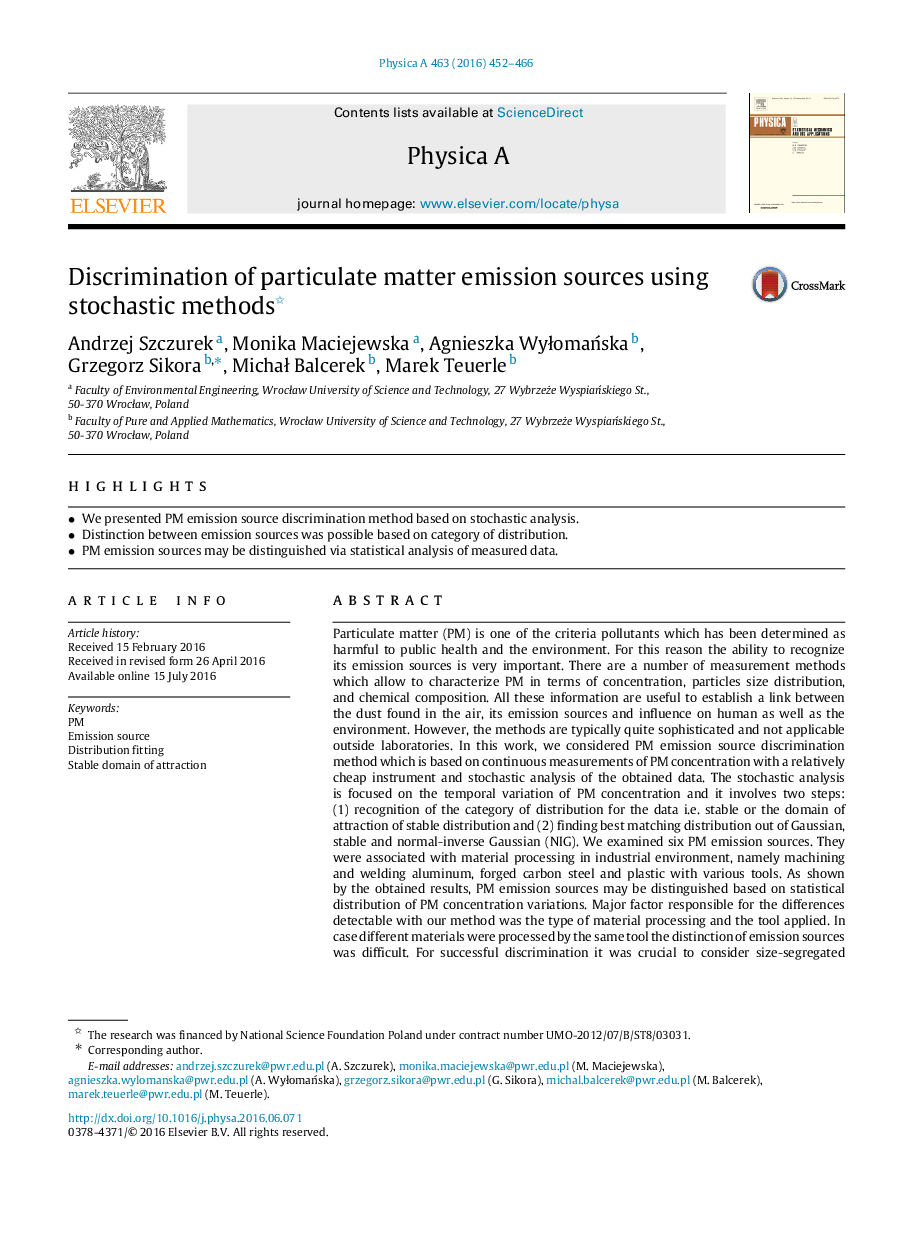| کد مقاله | کد نشریه | سال انتشار | مقاله انگلیسی | نسخه تمام متن |
|---|---|---|---|---|
| 973966 | 1480110 | 2016 | 15 صفحه PDF | دانلود رایگان |
• We presented PM emission source discrimination method based on stochastic analysis.
• Distinction between emission sources was possible based on category of distribution.
• PM emission sources may be distinguished via statistical analysis of measured data.
Particulate matter (PM) is one of the criteria pollutants which has been determined as harmful to public health and the environment. For this reason the ability to recognize its emission sources is very important. There are a number of measurement methods which allow to characterize PM in terms of concentration, particles size distribution, and chemical composition. All these information are useful to establish a link between the dust found in the air, its emission sources and influence on human as well as the environment. However, the methods are typically quite sophisticated and not applicable outside laboratories. In this work, we considered PM emission source discrimination method which is based on continuous measurements of PM concentration with a relatively cheap instrument and stochastic analysis of the obtained data. The stochastic analysis is focused on the temporal variation of PM concentration and it involves two steps: (1) recognition of the category of distribution for the data i.e. stable or the domain of attraction of stable distribution and (2) finding best matching distribution out of Gaussian, stable and normal-inverse Gaussian (NIG). We examined six PM emission sources. They were associated with material processing in industrial environment, namely machining and welding aluminum, forged carbon steel and plastic with various tools. As shown by the obtained results, PM emission sources may be distinguished based on statistical distribution of PM concentration variations. Major factor responsible for the differences detectable with our method was the type of material processing and the tool applied. In case different materials were processed by the same tool the distinction of emission sources was difficult. For successful discrimination it was crucial to consider size-segregated mass fraction concentrations. In our opinion the presented approach is very promising. It deserves further study and development.
Journal: Physica A: Statistical Mechanics and its Applications - Volume 463, 1 December 2016, Pages 452–466
